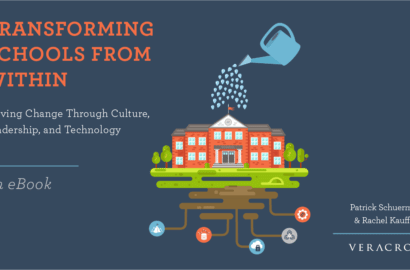
As a private or independent institution, fundraising plays a huge role in your school’s ability to sustain operations, enhance programming, and support your mission. Many schools plan a large-scale fundraiser in the fall to support their end-of-year appeals. These events are often called a “Giving Day,” or “Day of Giving.”
What is Giving Day
Giving Day is a fundraising campaign that aims to raise money for school programs and initiatives. Compared to other school fundraisers, Giving Day is typically just that — a 24-hour event focused on a specific fundraising goal for the betterment of the institution. These campaigns are typically driven by a sense of community and urgency, drawing contributions from current and former members of the school.
The Benefits of Giving Day
You might be asking, why Giving Day? There are many benefits to hosting a day of giving at your private or independent school. Let’s dive into a few.
Fund key initiatives: at its simplest, a Giving Day is an opportunity to raise funds for specific initiatives (like new campus facilities or equipment), scholarships, or programs that may not be covered in the cost of tuition alone.
Build community: Giving Days bring your school community together around a shared goal and sense of purpose. It’s a great way to engage with current students, parents, alumni, and other friends of the school.
Engage donors: the 24-hour format of a Giving Day creates urgency and excitement for your campaign. As a result, these campaigns often attract new donors who may not have ever contributed to your school before. It’s an opportunity to expand your donor base and introduce more people to your mission!
Showcase Progress: as an annual tradition, Giving Day is a way to showcase your school’s commitment to improving year after year. It encourages transparency and stewardship of raised funds to help secure the school’s future.
How to Plan a Giving Day
Planning a school-wide fundraiser can seem intimidating — but it doesn’t have to be. Follow these six steps to organize your Giving Day and make it a smashing success!
Step 1: Define Your Giving Day
What’s your fundraising goal? Set a clear objective for how much money you want to raise and (even more importantly) why.
When will it be? Choose a date that aligns with your school’s calendar, culture, and values. Consider special anniversaries, holidays, or events that resonate with your community. Avoid dates that coincide with major holidays or other competing fundraising campaigns.
Who should be involved? Identify key stakeholders and assemble a dedicated Giving Day team. Assign roles and responsibilities to ensure that everyone knows their part in the campaign. Be sure to think outside of your development office — everyone is responsible for advancement.
Step 2: Secure Matching Gifts
After identifying a Giving Day goal, see if you can find a donor to contribute a matching gift. This is when a donor agrees to contribute a certain amount of money to a campaign once that number has been reached organically. For example, if you crowdfund $10,000, an individual donor might agree to donate $10,000 to match.
Seek out individuals, foundations, or businesses who might be willing to provide a matching gift and essentially double the impact of your campaign contributions. Once you secure a matching gift donor, you can announce it during your Giving Day communications to generate excitement and momentum towards your goal.
Step 3: Prepare Your Communications
Strong communication is the key to raising awareness and engagement for your Giving Day campaign. Create a content calendar to plan communications before, during, and after the big day. Consider all marketing mediums including email, social media, and your website. A well-structured calendar ensures consistent messaging and makes sure folks are in the know!
Once your communication calendar is prepped, work with your graphic designer on the supporting campaign assets. Think about what you’ll need for email templates, social media graphics, video assets, and your website. Work together on an eye-catching landing page to announce your Giving Day and clearly communicate its purpose, impact, and urgency.
Step 4: Build Awareness
Many schools start promoting their Giving Day fundraisers four to six weeks in advance. Rely on your content calendar to stay organized and generate buzz across email, social media, and your website. Make it easy for donors to contribute to your campaign with a memorable vanity URL for your landing page, like /giving-day or /giving-day-2023.
As you spread the news about your campaign, be sure to leverage communities like your alumni network for support! Alumni can be powerful advocates for your school’s fundraising efforts. Engage this audience early and encourage them to spread the word about your Giving Day within their own circles. Encourage early donations, too — don’t make anyone wait if they feel called to donate today.
Step 5: Execute Your Plan
You’ve worked hard for months and it’s finally Giving Day! On the day of your fundraiser, be diligent and stick to your communication plan to generate buzz and engagement. Send updates and reminders throughout the day to highlight matching gifts and progress towards your goals. Make it visual with real-time stories, photos, and videos that showcase the impact of donor contributions.
Step 6: Say Thank You
Giving Day doesn’t end at the conclusion of your fundraiser. Immediately after your event, tally up your total and make an announcement of your progress via email, social media, and web communications. Include a message of gratitude to each person who contributed to the campaign, whether it was a financial donation or a social media post to spread the word.
Over the next few days and weeks, send personal thank you notes to each donor, volunteer, and individual who participated in Giving Day. Highlight the impact of their support and keep them engaged for future campaigns.
You also want to gather as much data as you can about your fundraiser. Which alumni class was most engaged? What marketing channels proved most successful? Make a list of what worked well and how you can improve for next year.
Speaking of, start planning for your next Giving Day as soon as your fundraiser wraps— don’t wait until next fall. Use the momentum from this year to apply your fresh insights and hit the ground running!
If you need some inspiration, check out our Giving Day Toolkit for resources to help you get started.



